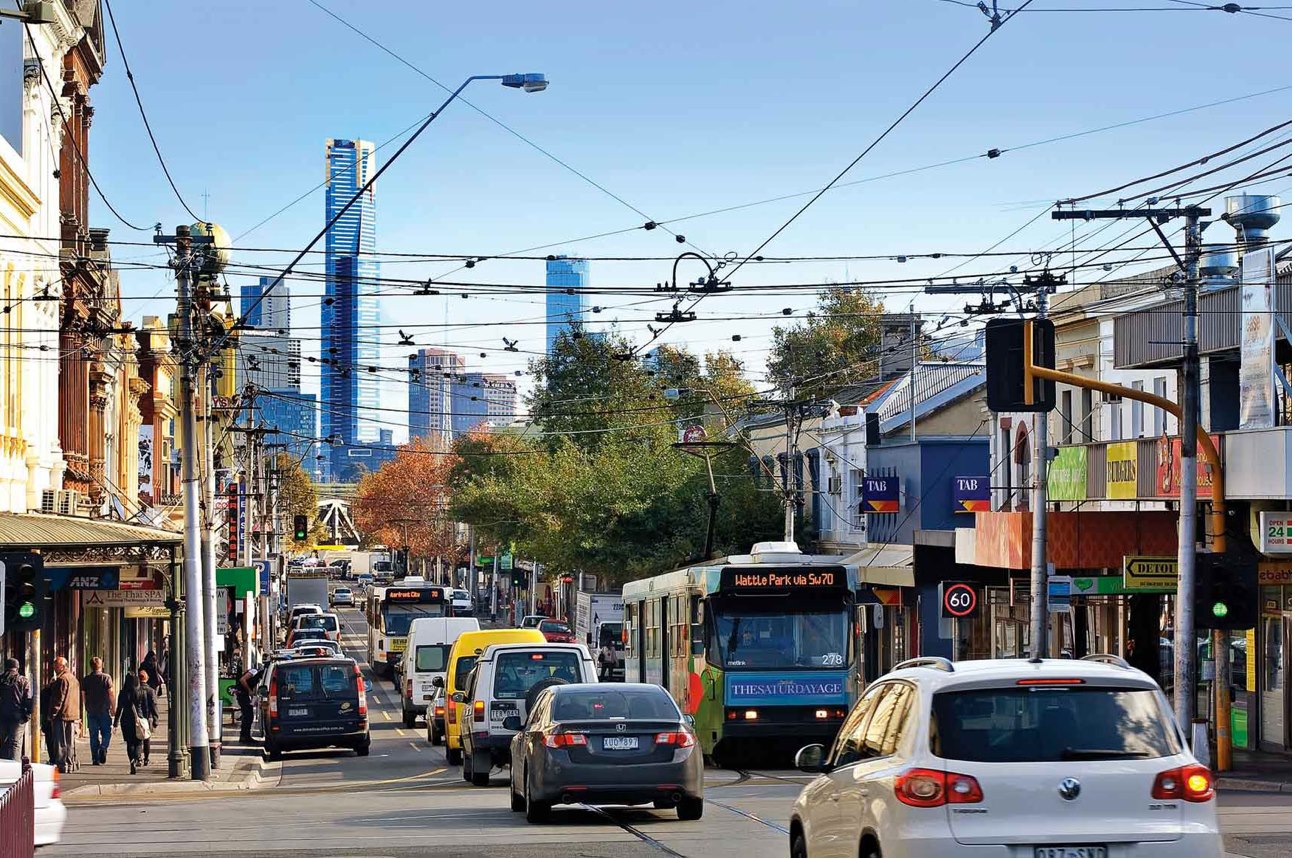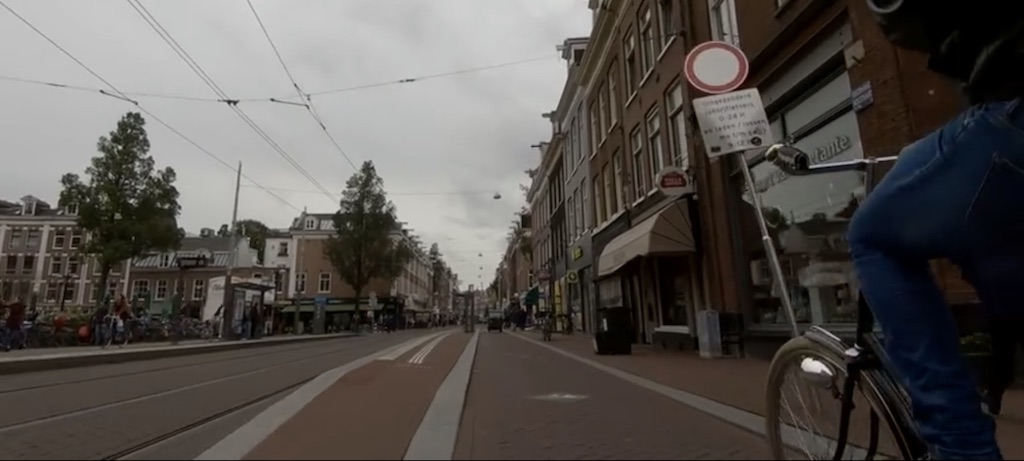How can we speed up trams?
We’d all like to see trams moving fast, and offering an attractive, convenient way to get around.

Problem
The problem is that our typical 20-metre wide tram-based shopping streets are not wide enough to support a separate lane each for trams, moving cars, parked cars, cycling and walking, let alone adding level access tram stops. Typically, our tram-based shopping streets have an inner lane shared between trams and cars, with an outer lane for car parking. During peak hour, the parking lane changes to a clearway lane, cars can overtake trams, and trams are blocked by a street full of cars. The outcome is that trams fail to offer a journey that is safer, faster and more convenient than driving, so many people choose to keep driving. Unfortunately, this slows down the whole street for everyone.
What the state government can do
The state government can make streets better for trams by:
- using smart traffic light sequences to help clear intersections as trams approach;
- preventing cars from overtaking and then blocking trams;
- adding protected bicycle lanes so that more people feel safe enough to switch from driving to cycling; and
- using demand responsive driving charges to “flatten the peak hour curve” which slows trams.
In summary, the solution is to upgrade our 20-metre wide tram-based shopping streets to the ‘Melbourne Shopping Street’ reference design, which includes level access tram stops. We don’t need to separate cars and trams (which would take up more street space), instead we need to keep the number of cars on the road below a threshold, whereupon trams can travel at acceptable speeds.

Smart traffic lights
Smart traffic lights that can detect arriving trams, and change the lights to clear the intersection and enable trams to keep moving, are proven in the Netherlands:
Moving more people
By clearing intersections, limiting the number of cars on the street, and converting the parking lane to a protected bicycle lane; we can not only speed up trams, we can move more people in total. This is because faster trams carry more people than a lane of cars, and because a permanent protected bicycle lane can carry more people per hour than a clearway lane for cars.
If people are offered modes of transport (trams, cycling) that are faster than driving, as well as being safe & convenient, then many more people are willing to switch. Even better, traffic counts from other countries show that if people change from driving to public transport and cycling, then there is less congestion for those who need to drive.

Increasing access & safety at tram stops
If the parking/clearway lane is replaced with a protected bicycle lane, then level access tram stops can be built that eliminate the hazard of tram passengers being being struck by a motor vehicle as they embark or disembark, thus eliminating the risk of serious injury or death. The only remaining hazard would be being struck by a person on a bicycle, which under Safe System, is not classed as imposing a risk of serious injury or death, because the kinetic energy of a person on a bicycle is below the critical threshold.

Conclusion
Yarra’s streets can be better for trams if:
- we convert our tram-based shopping streets to the ‘Melbourne Shopping Street’ reference design,
- the number of cars sharing the tram lane are kept below a threshold, and
- smart traffic lights clear intersections as trams approach.
How you can help
You can help by appearing on the Streets Alive Yarra website as a champion for your local street, neighbourhood, or school.
